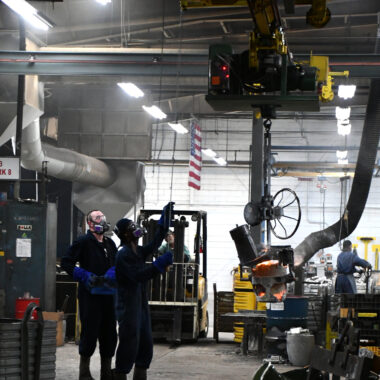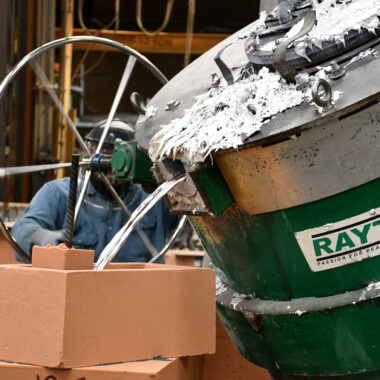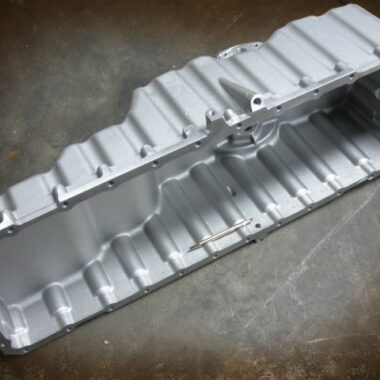Understanding About Aluminum Casting: Methods Demystified
Understanding About Aluminum Casting: Methods Demystified
Blog Article
Crafting Excellence: Exactly How to Attain High-Quality Light Weight Aluminum Castings Every Time
In the world of light weight aluminum spreading, the pursuit of perfection is a continuous journey that calls for a precise approach and an eager understanding of the complexities included. Achieving constant premium aluminum castings requires a detailed grasp of the processes, from selecting the ideal alloy to executing exact mold and mildew designs and thoroughly managing spreading parameters. However, truth mastery hinges on the capability to implement these components effortlessly to develop flawless castings each time. As we discover the ins and outs of crafting excellence in aluminum castings, revealing the vital methods and methods that cause remarkable results becomes critical for those pursuing excellence in this specialized field.
Understanding Aluminum Spreading Processes
Light weight aluminum casting procedures, crucial in the production market, involve the detailed transformation of liquified aluminum into strong types through a collection of meticulously regulated actions. Understanding these processes is extremely important to achieving top notch aluminum spreadings constantly - about aluminum casting. The key techniques used in aluminum spreading are die casting, sand spreading, and investment casting

Each of these processes has its advantages and is chosen based upon aspects like intricacy, quantity, and desired coating of the light weight aluminum casting. about aluminum casting. Recognizing the ins and outs of these approaches is critical for manufacturers intending to create premium light weight aluminum castings continually
Choosing the Right Aluminum Alloy
Choosing the suitable aluminum alloy is a vital choice in the manufacturing of top notch light weight aluminum castings. When selecting an aluminum alloy for casting, it is important to think about the particular needs of the application to make sure optimum efficiency.
Among one of the most typically used light weight aluminum alloys for casting is A356. This alloy offers excellent castability, high stamina, and good rust resistance, making it ideal for a wide variety of applications. 6061 light weight aluminum alloy is favored for its superior weldability and excellent mechanical buildings. For applications requiring high strength, 7075 aluminum alloy is a popular choice because of its outstanding strength-to-weight proportion.
In enhancement to mechanical buildings, considerations such as expense, schedule, and post-casting procedures need to also influence the selection of the right light weight aluminum alloy. By thoroughly examining these variables, producers can ensure the manufacturing of premium light weight aluminum castings that meet the preferred requirements.
Carrying Out Proper Mold And Mildew Design
Establishing an effective mold layout is vital for ensuring the successful production of high-quality light weight aluminum castings. Proper mold layout plays a significant function in accomplishing the wanted qualities of the end product. To execute a successful mold style, variables such as material circulation, cooling rates, and part geometry have to be very carefully taken into consideration.
One secret facet of mold and mildew design is making sure appropriate dental filling and solidification of the aluminum within the mold tooth cavity. This involves making runner and gating systems that help with smooth metal circulation and prevent issues such as air entrapment or incomplete filling. In addition, integrating air conditioning channels right into the mold style aids manage solidification prices and decrease the risk of porosity or shrinkage issues.

Controlling Spreading Parameters

Ensuring Post-Casting Top Quality Checks
To preserve the excellent quality of light weight aluminum spreadings, detailed post-casting high quality checks are essential. After the casting procedure is finished, it is critical to ensure that the end products satisfy the preferred standards and requirements. One of the main quality checks includes inspecting the surface area coating of the castings to determine any type of flaws such as porosity, fractures, or surface irregularities. This visual examination is typically supplemented by non-destructive screening techniques like ultrasonic screening or color penetrant assessment to discover inner imperfections that may compromise the he said integrity of the spreading.
Dimensional accuracy is another important element that must be verified during post-casting top quality checks. Dimensions of essential measurements and resistances ought to be taken to verify that the spreadings conform to the called for specs. In addition, mechanical homes such as hardness, tensile stamina, and impact resistance might need to be reviewed via product testing to ensure that the castings have the required toughness and sturdiness for their designated application.
Verdict
Finally, attaining high-grade light weight aluminum castings needs a detailed understanding of the spreading processes, choosing the ideal alloy, designing molds effectively, managing spreading specifications diligently, and performing post-casting high quality checks carefully. By adhering to Web Site these actions, producers can continually generate light weight aluminum castings that satisfy the greatest standards of top quality and efficiency.
Attaining constant high-quality light weight aluminum castings demands a comprehensive grasp of the procedures, from picking the proper alloy to implementing exact mold designs and meticulously regulating spreading criteria. The primary methods utilized in aluminum casting are die spreading, sand spreading, and financial investment casting.
Financial investment casting, additionally understood as precision spreading, includes producing wax patterns that are covered in ceramic to form molds.Choosing the suitable light weight aluminum alloy is an essential choice in the production of high-grade aluminum castings.Ensuring precise control over spreading criteria is vital for preserving consistency and high quality in light weight aluminum spreading manufacturing.
Report this page